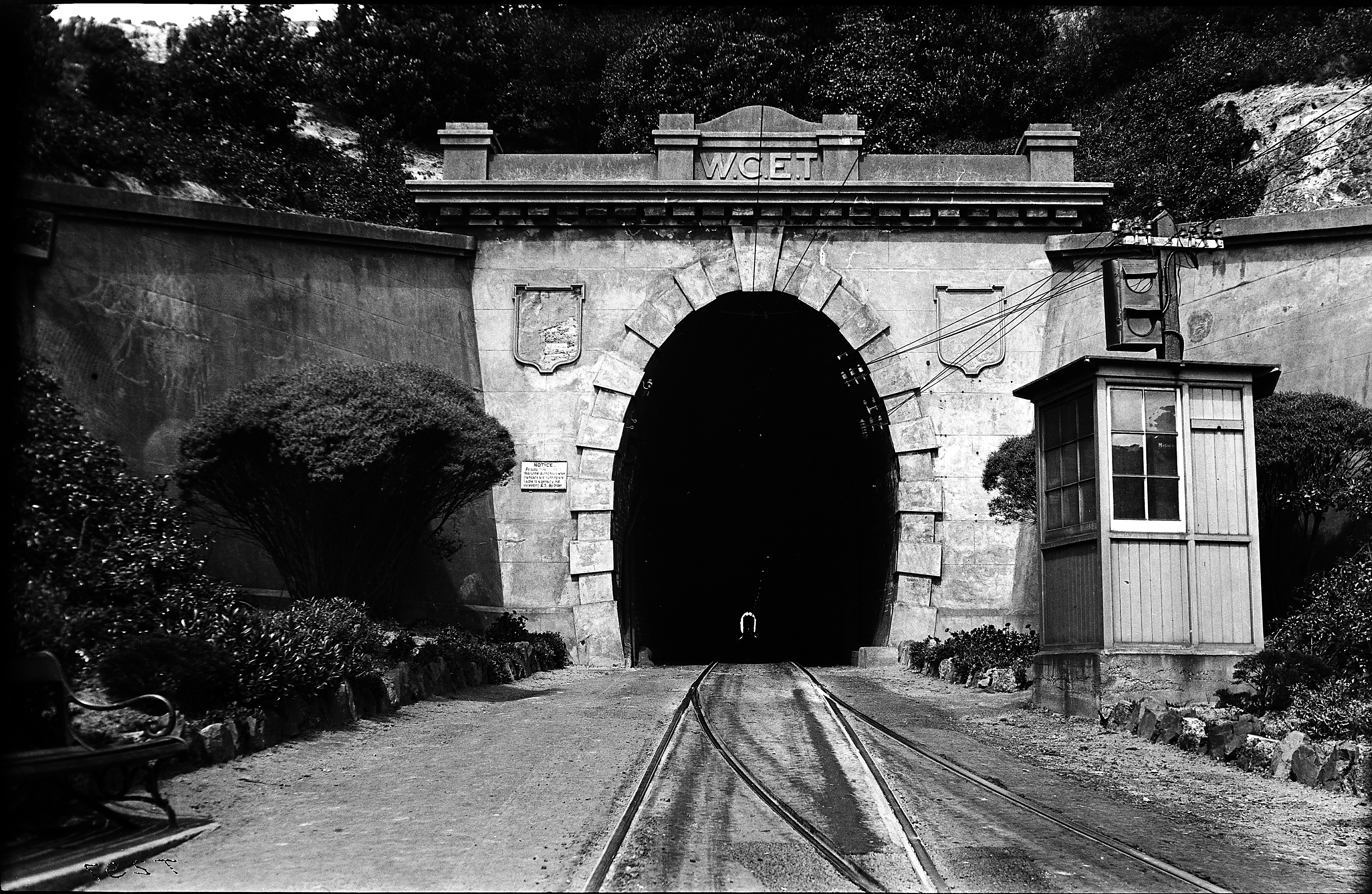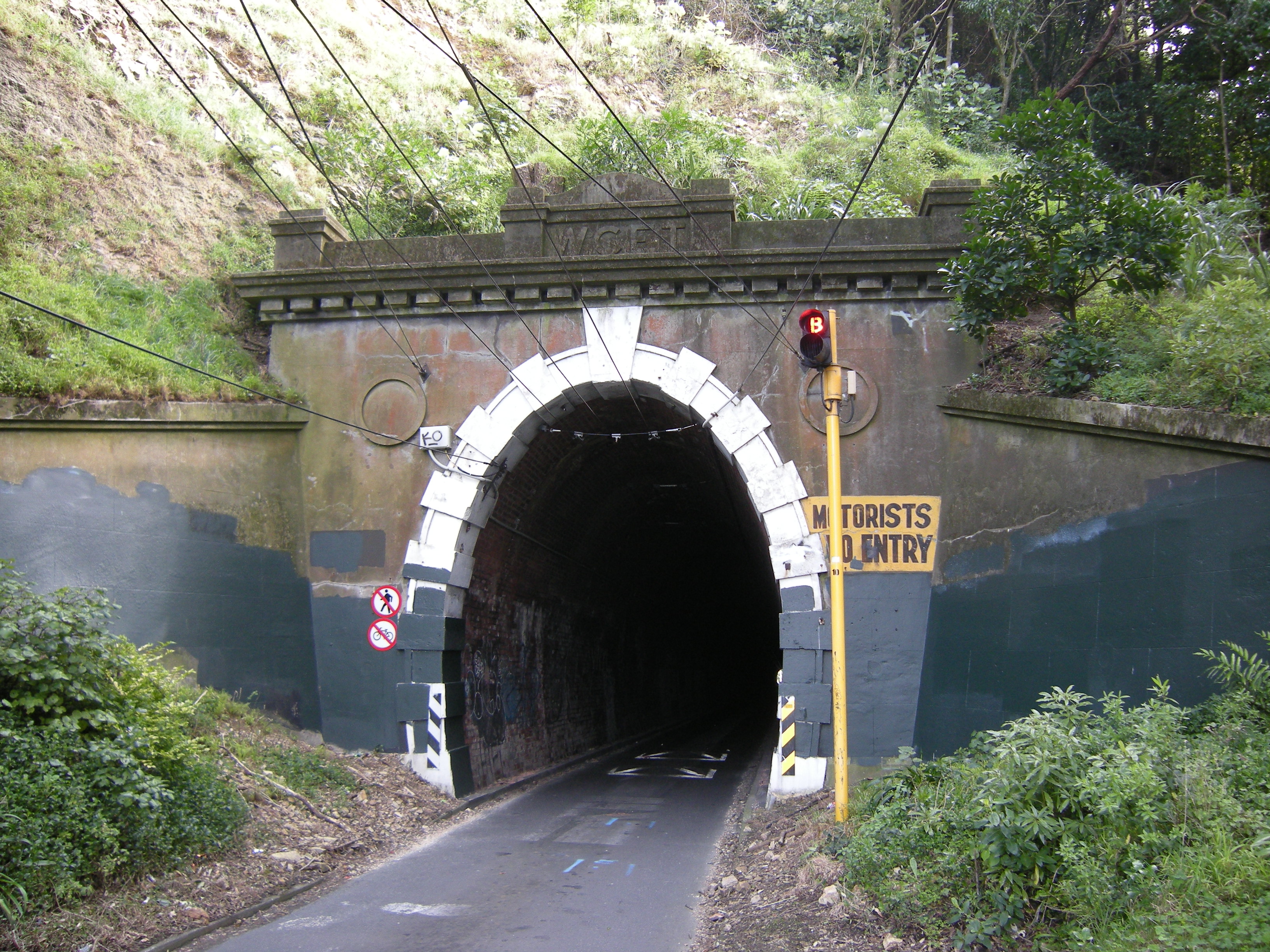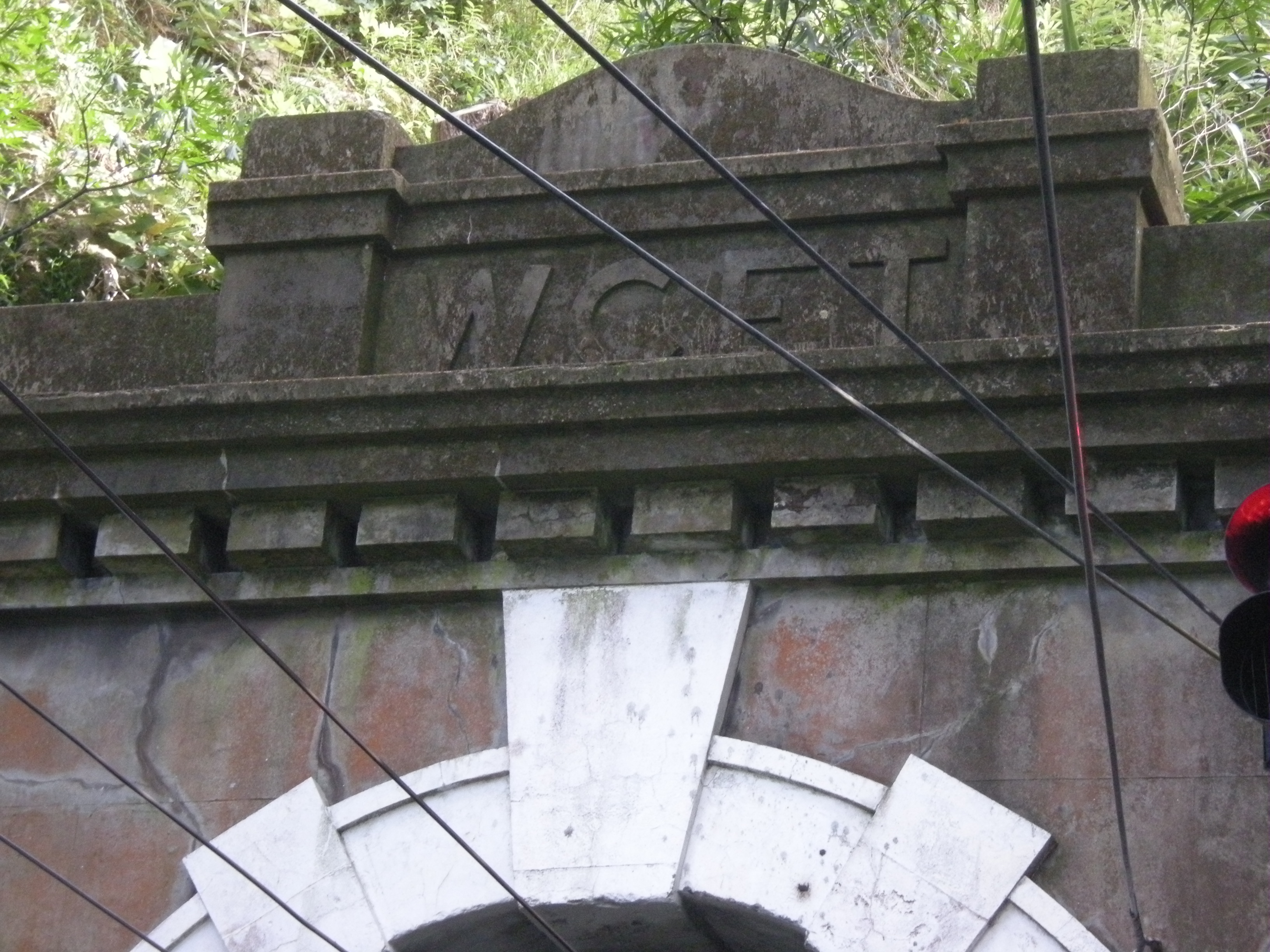Hataitai Bus Tunnel
Heritage object, Hataitai Bus Tunnel, Kilbirnie Tunnel
-
Constructed
1907
-
-
-
Builder(s)
Mr A Maguire
-
Although constructed to fulfil a utilitarian purpose, the design of the entrances of the Hataitai Tunnel have been influenced by the Classical style, featuring elaborate keystones and a well proportioned entablature and cornice. It is the most decorative of the tram tunnels constructed in Wellington between 1900 and 1910. The tunnel itself was constructed using materials and techniques appropriate to the period and is an elegantly engineered structure.
The Pirie Street to Waitoa Road tunnel is part of the legacy of the tramway system in Wellington and is a physical reminder of the expansion of the tramway system in the early 1900s and the pivotal role that the tramways played in Wellington’s suburban development.
The Hataitai Tunnel is an important historic object that has become a feature in the Wellington community, particularly for those who use public transport on a regular basis. The Tunnel contributes significantly to the sense of place and continuity in Wellington and acts as an important link between the city and the suburbs on the other side of Mt Victoria. -
Downloadable(s)
-
close
History
-
The expansion of the tramway system in the early 1900s played a pivotal role in Wellington’s suburban development. Trams at this time were the main form of public transport, and remained so for the next half of the century. The Pirie Street to Waitoa Road tunnel is part of the legacy of the tramway system in Wellington that in 1963 was converted for use as a bus tunnel.
At the turn of the century Hataitai was part of a predominantly rural area controlled by the Melrose Borough Council (area also consisted of Roseneath, Kilbirnie, Lyall Bay, Melrose, Ohiro Bay, Happy Valley, Brooklyn, and Kelburn). In 1903 the Melrose Borough Council merged with the Wellington City Council to become a part of Wellington City. This union opened up large areas of undeveloped land that could be used for housing. Many people were interested in building houses and communities outside of the central city, but development was unlikely to succeed unless there was no way for people to easily travel between their homes and the central city for work and entertainment. The motor car was at this time too expensive for most families and the roads were rough and largely unsealed, making them impractical for walking or bicycling. As the population in Hataitai and other outer suburbs increased due to the sale and development of land, residents began demanding better access to the suburb. At this time the access was only via Newtown and Crawford Road, by negotiating the road around the coast from Evan’s Bay, or by taking tracks over Mt Victoria.
By 1904 there was a strong movement from the residents demanding a tunnel linking Hataitai to the city, and the Post reported a lively meeting of people discussing the issue. It was said that a tunnel would shorten the distance from North Kilbirnie (now Hataitai) to the city by two-thirds of a mile, the spoil could be used for improvements to Kilbirnie, and that the council would gain income in rates if more people were encouraged to settle in the district. The Hataitai Land Company, which had been formed in 1901 to sell sections on the hillsides north from Waitoa Road, in particular pushed for a tunnel as it would improve the value of its sections.
Eventually plans were made for the construction of the tunnel and the Hataitai Land Company donated almost £10000 towards the cost of construction. The 1200ft-long tunnel was dug through the use of explosives and by pick and shovel, and took 18 months to construct. The project was overseen by the City Engineer W.H. Morton, and the contractor of the tunnel was Mr. A. Maguire.
The construction was undertaken by creating an open arch, supported by heavy timbering – thick vertical ‘legs’, surmounted by stout ‘sills’ running across the top. This timber then had to be removed in the preparation for bricking, which involved replacing the timber with ribs and lagging for the brick arch. During the preparation of nearly the final length towards the city end of the tunnel for bricking, an accident occurred where a sill gave way under the pressure of the overlying earth, a leg slipped, and a mass of clay fell which ‘telescoped’ the woodwork. Three men were killed in the accident and a fourth was injured and taken to hospital. It was reported at the time that the land at the city end of the tunnel (towards Pirie Street) was made of very treacherous materials that was prone to slips. The accident caused delays while the debris was cleared, but work was finished on 11 April 1907 at a total cost of £15834. The new tramline through the tunnel was tested the next day and was officially opened to the public on the 16 April 1907. Initially tramcars ran every 20 minutes, and more frequently between 5 and 7pm.
There was a lot of discussion about where fare sections should be on the new route with various residents groups wanting input. Those on the Mt Victoria side wanted a penny fare to the General Post Office, while those in Hataitai were concerned about the consistency of the fare structure. Almost immediately there was concern over the size of the tunnel and that it did not provide room for pedestrians. The fact that the Hataitai Land Company had provided funding for the construction while other areas did not contribute was also a source of bitterness. As early as 1909 the Mt Victoria tunnel was proposed and by 1931 it was constructed and opened for use.
The tunnel was operational for the next fifty years, and when Wellington’s trams were phased out in the 1960s, it was converted for use as a bus tunnel. The tram tracks, tram wire, and two small water mains were removed from the tunnel, and replaced with trolley bus wires, ducting for phone cables, electricity cables, and a new 15 inch water main down the centre of the tunnel floor. The first scheduled trolley bus ran through the tunnel on Sunday 13 October 1963 and it continues to be used for bus services in 2013.
Few changes have occurred to the tunnel since the 1963 conversion, other than a 2007 consent was issued to City Link (alongside an easement as the land is designated Town Belt reserve) to install fibre optic cable through the tram tunnel. This was attached to the mortar along the centreline of the tunnel so that the attachments would not damage the brickwork. In 2011 it was determined that the portals into the tunnel could be an earthquake hazard and it was recommended that they be strengthened by bracing with steel plates and bolts. This is scheduled for 2013-2014.
-
Modifications
close
-
1907
-
Original construction completed
-
1963
-
Conversion to bus tunnel
-
2007 - 2008
-
Addition – fibre optic cable running along centreline attached to mortar (this may need to be checked for completion)
-
-
Occupation History
close
-
unknown
-
Not assessed
-
-
-
close
Architectural Information
-
Building Classification(s)
close
Not assessed
-
Architecture
close
Although the tram tunnel is a utilitarian structure, it has been designed with skill and is a scholarly work, with good proportion. The entrances are influenced by the Classical style, with an arched opening that features elaborate stylised keystones. Above the arched opening is an entablature and cornice that has been displays the Wellington City Electric Tramway logo.
The tunnel construction was undertaken by creating an open arch, supported by heavy timbering – thick vertical ‘legs’, surmounted by stout ‘sills’ running across the top, this timber then had to be removed in the preparation for bricking, which involved replacing the timber with ribs and lagging for the brick arch. During the conversion to bus tunnel the tram tracks, tram wire, and two small water mains were removed from the tunnel, and replaced with trolley bus wires, ducting for phone cables, electricity cables, and a new 15 inch water main down the centre of the tunnel floor.
-
Materials
close
- Concrete
- Brick
-
Setting
close
The entrances to the bus tunnel are located at the ends of Pirie Street (city side) and Waitoa Road (Hataitai side). The entrances are obscured by overgrown trees making it difficult to see the entablature and cornice. The areas on either side of the tunnel are mainly residential and views of the city can be seen upon exiting the Pirie Street entrance of the tunnel. The tunnel can loosely be understood as an exit and entrance to Wellington city.
-
Building Classification(s)
close
-
close
Cultural Value
Although constructed to fulfil a utilitarian purpose, the design of the entrances of the Hataitai Tunnel have been influenced by the Classical style, featuring elaborate keystones and a well proportioned entablature and cornice. It is the most decorative of the tram tunnels constructed in Wellington between 1900 and 1910. The tunnel itself was constructed using materials and techniques appropriate to the period and is an elegantly engineered structure.
The Pirie Street to Waitoa Road tunnel is part of the legacy of the tramway system in Wellington and is a physical reminder of the expansion of the tramway system in the early 1900s and the pivotal role that the tramways played in Wellington’s suburban development.
The Hataitai Tunnel is an important historic object that has become a feature in the Wellington community, particularly for those who use public transport on a regular basis. The Tunnel contributes significantly to the sense of place and continuity in Wellington and acts as an important link between the city and the suburbs on the other side of Mt Victoria.
-
Aesthetic Value
close
-
Architectural
Does the item have architectural or artistic value for characteristics that may include its design, style, era, form, scale, materials, colour, texture, patina of age, quality of space, craftsmanship, smells, and sounds?
Although constructed to fulfil a utilitarian purpose, the design of the entrances of the Hataitai Tunnel have been influenced by the Classical style, featuring elaborate keystones and a well proportioned entablature and cornice. It is the most decorative of the tram tunnels constructed in Wellington between 1900 and 1910. The tunnel itself was constructed using materials and techniques appropriate to the period and is an elegantly engineered structure.
-
Group
Is the item part of a group of buildings, structures, or sites that taken together have coherence because of their age, history, style, scale, materials, or use?
The Hataitai Tunnel is one of a group of tunnels constructed in the first half of the 20th century designed to link Wellington city with other suburbs. The Karori Tunnel, Northland Tunnel, Seatoun Tunnel, and the Mt Victoria Tunnel can be seen as a part of a group with the Hataitai Tunnel as they are of similar ages, uses, history, and built using similar materials and techniques.
-
Townscape
Does the item have townscape value for the part it plays in defining a space or street; providing visual interest; its role as a landmark; or the contribution it makes to the character and sense of place of Wellington?
The Hataitai Tunnel is of townscape value as it links the city with the suburbs in the far side of Mt Victoria. The tunnel contributes greatly to the character and sense of place in Wellington through the great amount of visual interest that the entrances provide to the overall residential areas that they are found in.
-
-
Historic Value
close
-
Association
Is the item associated with an important person, group, or organisation?
The Pirie Street to Waitoa Road tunnel is part of the legacy of the tramway system in Wellington and is a physical reminder of the expansion of the tramway system in the early 1900s and the pivotal role that the tramways played in Wellington’s suburban development.
-
-
Scientific Value
close
-
Educational
Does the item have educational value for what it can demonstrate about aspects of the past?
The Hataitai tunnel is of educational value for what it can tell us about the suburban development of Wellington in the early 20th century and the role that the tramway had in this development. It also can provide insight into the ways in which tunnels were constructed in the early part of the 20th century.
-
Technological
Does the item have technological value for its innovative or important construction methods or use of materials?
The Hataitai Tunnel is of technical interest due to the materials and construction techniques that were used. It appears that the brick works are all original.
-
-
Social Value
close
-
Identity - Sense of Place - Continuity
Is the item a focus of community, regional, or national identity? Does the item contribute to sense of place or continuity?
The Hataitai Tunnel is an important historic object that has become a feature in the Wellington community, particularly for those who use public transport on a regular basis. The Tunnel contributes significantly to the sense of place and continuity in Wellington and acts as an important link between the city and the suburbs on the other side of Mt Victoria.
-
-
Level of Cultural Heritage Significance
close
-
Authentic
Does the item have authenticity or integrity because it retains significant fabric from the time of its construction or from later periods when important additions or modifications were carried out?
The Hataitai Tunnel maintains a high level of historic authenticity and integrity as it has been through minimal changes since its construction. The conversion to bus tunnel in 1963 saw the tram tracks, tram wire, and two small water mains removed from the tunnel, and replaced with trolley bus wires, ducting for phone cables, electricity cables, and a new 15 inch water main down the centre of the tunnel floor. The exterior, other than being obscured by plants, appears to be in excellent original condition.
-
Representative
Is the item a good example of the class it represents?
The Hataitai Tunnel is a good example of a tram tunnel built prior to 1910. It is built in materials, to a design, and using techniques appropriate to the period and can be understood as one of a group of similar tunnels in Wellington. Of this group, the Hataitai Tunnel is the most decorative.
-
Importance
Is the item important at a local, regional, national, or international level?
The Hataitai Bus Tunnel is a locally important historic object due to its long history linking Wellington city and the suburbs on the far side of Mt Victoria. It makes a significant contribution to the Pirie Street and Waitoa Road streetscapes and loosely defines an exit and entrance point to Wellington. As one of a group of tunnels built for the tramways it presents an interesting element of Wellington’s suburban development. It retains significant amounts of original materials despite the loss of original features and materials in the conversion to a bus tunnel.
-
-
Local / Regional / National / International Importance
close
Not assessed
-
Aesthetic Value
close
-
close
Site Detail
-
District Plan Number
12/44
-
Legal Description
Part Sections 3, 4 Town Belt Reserve
-
Heritage New Zealand Listed
2/Historic place 3649
-
Archaeological Site
Unknown risk
-
Current Uses
unknown
-
Former Uses
unknown
-
Has building been funded
No
-
Funding Amount
Not applicable
-
Earthquake Prone Status
Unknown
-
-
close
Additional Information
-
Sources
close
- Historic Places Trust. ‘Morton, William H.’ Professional Biographies. Accessed 17 Sep. 13
- Hataitai bus or tram tunnel, Wellington. Negatives of the Evening Post newspaper. Ref: 114/120/08-G. Alexander Turnbull Library, Wellington, New Zealand.
- McKirdy, P. ‘The Tram Tunnel or Bus Tunnel’. Heritage Help. Last updated April 2011. Accessed 17 September 2013
- Wellington City Archive 1963 plans showing conversion to bus tunnel (00045: 1: 284)
- Technical Documentation close
-
Footnotes
close
Not available
-
Sources
close
Last updated: 9/26/2017 10:54:24 PM




